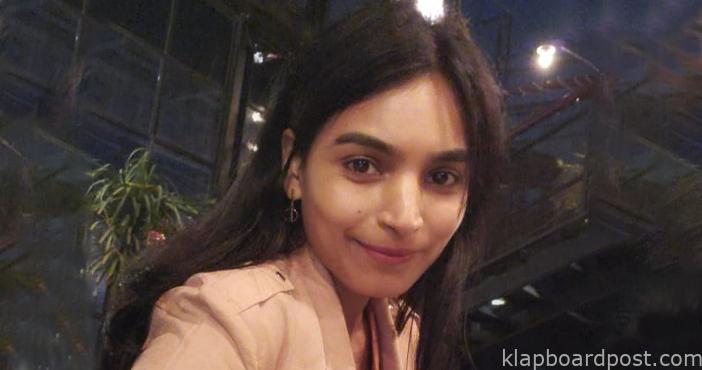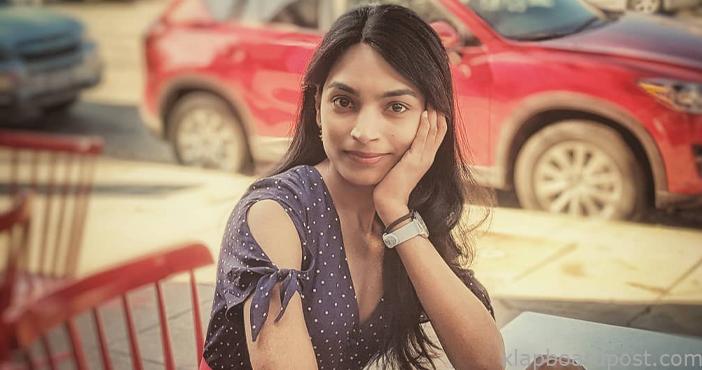Y.Sunita Chowdhary
Deepthi Karanam did her engineering at BITS Pilani. and then the masters at Purdue, worked at a few Software companies like eBay, Netflix (Netflix was first mainly a software company before it became the giant Studio that it is now). While working as a software engineer in a country with no one she knew, she slowly pivoted towards Theatre and filmmaking. In an industry where there is gender imbalance, Deepthi Karnama, our Telugu girl, stands tall as a colorist and has the ability to rapidly change the look and feel of the entire film. The genre of grading is technical and Deepthi enjoys the process of beginning, crafting and delivering the job. Her recent work was Solo Brathuke So Betteru and she has been getting encomiums for the same. It is so rewarding to be the tool in the process for those involved, seeing their vision coming together and Deepthi quite agrees in this conversation with Klapboardpost.com (A bit more about her: https://www.deepthikaranam.com/about)

How did you end up being a colourist? Did you get a specialised education in the field?
I knew I wanted to be involved in some part of filmmaking, just didn’t know which part. I just was amused by the whole filmmaking process that I wanted to even be a production assistant or someone who serves tea 🙂 So that was the biggest challenge – what should I do for films, rather what can I do. I have always loved handling cameras, so I’ve started taking courses in Cinematography – dabbled in the field for a bit and found my passion is to produce powerful and stunning images. I have fueled this passion further by taking up courses extensively in Color grading while in Los Angeles, researching on different grading techniques, and tons of content viewing hours. Then I found myself (as a person who got used to a desk job for 10 yrs) naturally enjoying grading more and more.

At what stage of the filmmaking process are you called in?
It totally depends on the type of film and what level of perfection the D.P wants. Sometimes I am called in as soon as the DP is signed for a project. And sometimes at the very end after the edit is locked.
Have you worked on the bigger projects that use high-end cameras and also that has been shot on a handycam. What are the various challenges that a project like that can pose?
Oh yes! I have worked on a lot of projects that had the same scene that could be shot on say an Arri Alexa and an iPhone or a sony a7, and the shots could be placed literally right next to each other. And the main challenge which is quite obvious is how to make the lower bit depth cameras look like a beautiful Alexa image. And sometimes it’s just not possible even with the ton of tricks in our bag, that’s when the painful downgrading of images from higher-end cameras will happen, so that in comparison the lower bit depth camera images dont look as bad.

How big a part of the creative process would you say you are?
It again totally depends on the project and the freedom the DP gives me. Some DPs just are very particular about the look and feel that they want, and I have to work staying in that path that’s laid down. But some DPs do give the first opportunity for me to research and figure out what’s best for that particular project.
There are cases where the entire feel of the project is very dependent on grading and there are cases that don’t really need anything from grading. So it’s very much based on the type of content I would say. At the end of the day it’s totally up to the DP or the director and of course we are all here to materialize the final vision of the content.

Where do you start with the actual grading process and how much of a close collaboration is it?
Most features here in the south are graded in the studio after the edit is locked.
Sometimes the process is kicked off on-set to roughly lock the look and later hone in the actual nitty gritty stuff.
And sometimes DP would bring in the test footage and we would work together to make an in camera LUT (look up table or just “look”) that is just applied to the entire footage as a good step-1. And then the details are worked on later at the studio after the edit is locked. This way the entire cast and crew will already have a pretty good idea of how the content is going to look like without any last minute surprises. This is my favorite kind of workflow.
How often do you go back to change something you’ve already worked on?
Oh quite often, more often than needed i guess. I work on something today, and the next morning I go into the studio and I find it disgusting (lol) and start everything from scratch. I browse a ton of images and paintings during the period of the grade (actually even when i am not grading, i just keep saving)
Very early on in this career, I got some great tips from my instructors. One of them is to shield the DP if possible from all the uncertainty, research enough on the footage that was given so that we can confidently present it to the client. Usually the client draws confidence from the colorist.

What’s the difference between how a big-budget film is graded as opposed to smaller independent projects?
There are differences but they aren’t what people typically think the differences are.
Usually bigger budget films are the easiest to grade, as the lighting is pretty much nailed on set, production design has the colors that depict the tone of the scene, cameras have good dynamic range and bit depth, lenses are sharp – i can go on and on.
Whereas smaller budget films, achieving all these on set can be a bit unrealistic given the constraints they have, which is totally understandable. But that’s what makes it challenging to grade and make them look good.
But at the same time the expectations and complexity of the workflows are larger in bigger budget films.
Does the lack of recognition ever bother you? Film technicians aren’t given much credit but even when they are, rarely do people talk about colourists.
Not at all. The reason being, until the early 2000s people didn’t even care about who is the director of a film, it has always been about the actors. Then a few years down the lane, people started talking about the directors and going to the movies just coz so and so directed the film. Slowly people started recognizing the Cinematographers and Editors. I think audio guys like programmers etc and video guys like colorists are just down the lane, it’s more about the lack of awareness of the filmmaking and not exactly the intentional ignorance in my opinion.

Who are some of the colourists whose work you admire?
My instructor – Dado Valentic of course, my no. 1 favorite colorist, rather color scientist. He has always been my inspiration and Jill Bogdanowicz (Joker fame)
I mean apart from them, whoever puts effort on storytelling as opposed to just creating a pretty image is my favorite. I always admire when the content is treated like the hero, not the particular frame or shot. I often find it challenging to continually think of the content from a holistic point of view. Sometimes I fail and sometimes not, but that’s okay as long as I am learning and aware of what colors and contrast i am putting into an image and why i am doing that and what feeling it is generating in the audience.

Can you tell by looking at other work what was shot on camera and how much was added in post?
Which camera something was shot on – not all the time. To some extent we can tell that this was shot on a camera that has a bit depth lesser than 10 or a very low dynamic range.
If the image is natural then it’s hard to say if it was done on camera or in post. But it’s very easy to determine that it was done in post when we get into the not natural looking realm. (note: not natural is not always bad and natural is not always best of course)
What’s your favourite part of your job?
My most favorite part of grading is building the initial look of the project with the DP. This is when there is so much creative flow in the d.i suite, so much back and forths, healthy confusions, constructive feedbacks, scratching an entire day of worth of work or sometimes a couple of days. But it’s all fun.

The projects that you worked on so far and your experience on working on Solo Brathuke So Betteru. Your future works?
I guess not many can say that they have worked on student projects shot on iPhones to mainstream features shot on cutting edge cameras and lenses. But I was lucky enough to get to work on the types of projects that I did. Working on Solo was wonderful as the DP always knew what he wanted and at the same time open for experimentation even in a commercial romantic comedy. It is one of those rare experiences that you get to be involved at every single stage of the movie right from pre production, filter tests and lens tests. The things that i learnt from this particular project will definitely help me further even if they aren’t reflected yet.
There are a couple of projects in the pipeline that I am very much excited about but taking it very slowly as I want to work on quality projects not quantity.
Why do Colorists work only on heroes and ignore the heroines?
I have noticed that southern industry tends to have more hero oriented subjects, and it’s our responsibility to work more on the protagonist of the story, whoever that is male or female. In order to convey the story the way we want to, there may be some need for extra effort to put on as the audience’s eyes are usually locked to the protagonist’s eyes most of the time.













